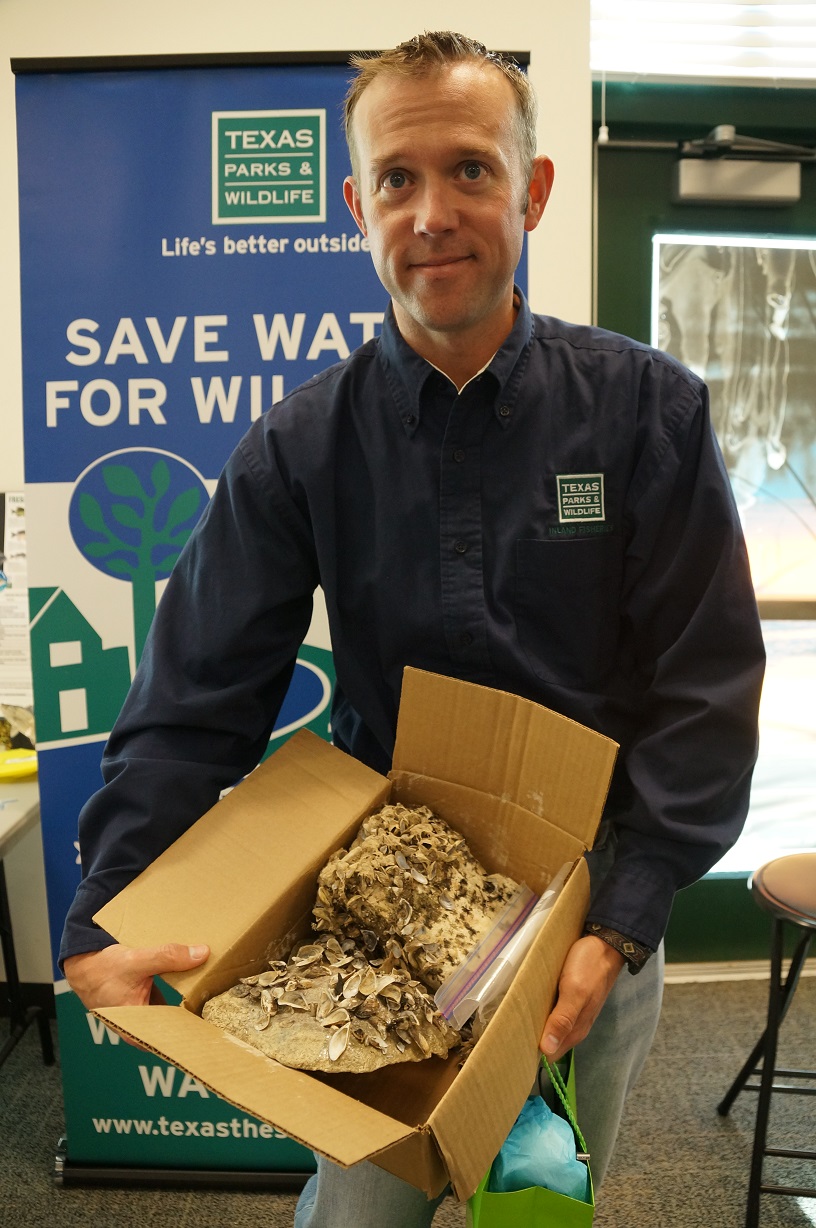Invasives: Clean, Drain and Dry
This is Passport to Texas
Arriving in the ballast of ships from Eastern Europe, zebra mussels reached the Great Lakes in the 1980s.
05— They’ve been pretty steadily moving across much of the eastern and central portion of the United States.
Inland fisheries biologist Brian Van Zee says they arrived in Lake Texoma in 2009; and occupy waters of 6 lakes in north and Central Texas.
10—They’re primarily moved from water body to water body by boaters, who don’t take the time to clean, drain and dry when heading from an infested lake to a non-infested lake.
As filter feeders Zebra Mussels impact the aquatic food chain and compete for plankton. They clog water intake pipes of municipal utility districts, causing significant increases in maintenance and operational costs. It’s vital boaters clean, drain and dry their boats after every outing.
19—We recommend boaters dry their boats for at least a week before they go from one lake to the next. If they pull the plug out of the bottom of the boat, lower the engines down, and make sure there’s no water in them, and make sure the live wells are empty, and open those compartments up and let them dry in between going from one lake to the next, you really reduce that risk of moving zebra mussels from one lake to another.
At this time, clean, drain and dry is the law in 47 Texas counties, and could expand to statewide. [NOTE: Since the program was first produced, the Texas Parks and Wildlife Commission met and approved a new regulation requiring that all boats operating on public fresh water anywhere in Texas be drained before leaving or approaching a lake or river to help combat the further spread of zebra mussels and other invasive species. The new measure takes effect July 1, 2014.]
The Wildlife and Sport Fish Restoration Program supports our series. For Texas Parks and Wildlife…I’m Cecilia Nasti.



 Passport to Texas is a
Passport to Texas is a  Passport to Texas is made available by:
Passport to Texas is made available by: